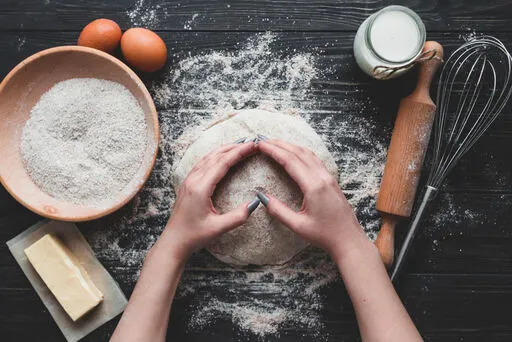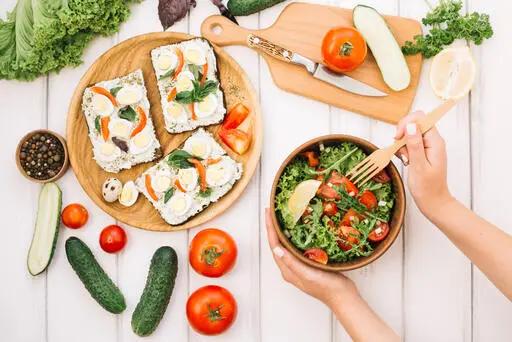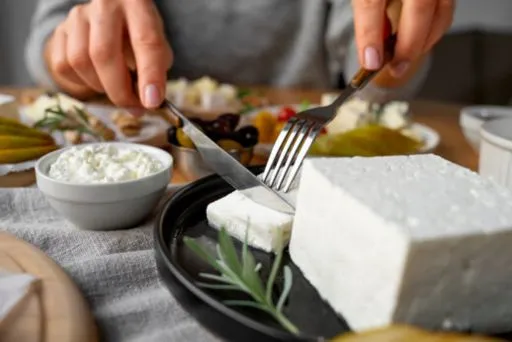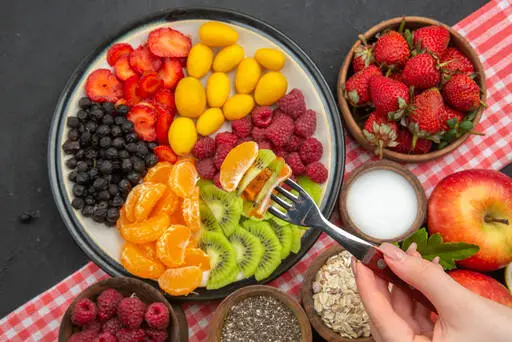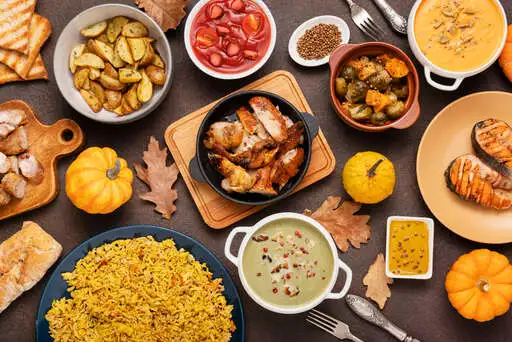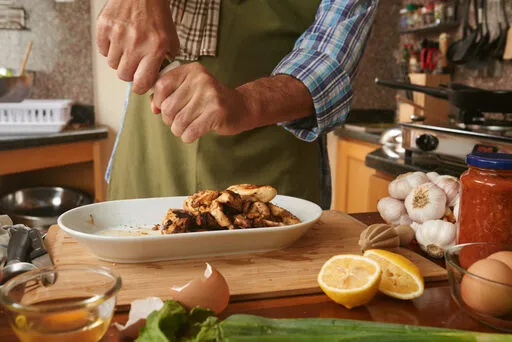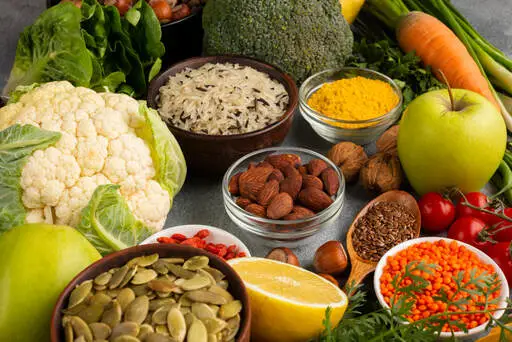From the sizzle of onions at high heat releasing a characteristic aroma to the tenderizing effects of marinades, the science of food is full of exciting discoveries. Whether you’re a seasoned chef or a home cook, our insights will inspire you to experiment and innovate in your kitchen. Dive into the “Science of Food” and transform your culinary adventures with good to best.
Table of Contents
1. Introduction to Food Science
Understanding the science behind food is essential for anyone looking to elevate their culinary skills. Food science delves into the physical, chemical, and biological transformations that ingredients undergo during cooking. This knowledge can turn a good cook into an exceptional one, capable of creating dishes that are consistently delicious and visually appealing.
Food science isn’t just for professional chefs or food scientists; it’s beneficial for home cooks as well. By grasping the principles of food science, such as the Maillard reaction, gelatinization, and emulsification, cooks can troubleshoot common issues and improve their recipes. Whether you’re preparing a family meal or a gourmet dinner, the science of food can help you achieve better results.
The intersection of art and science in cooking allows for both creativity and precision. Understanding the science behind food doesn’t limit your creativity but rather enhances it, giving you the tools to experiment more effectively and confidently. From controlling cooking temperatures to mastering the timing of ingredient additions, food science provides a foundation for culinary innovation.
- The Art and Science of Cooking
Cooking is a harmonious blend of art and science. While the artistic side allows for creativity and personal expression, the scientific aspect ensures precision and consistency. Every ingredient in a recipe has a specific role, and understanding these roles can help you make informed adjustments to enhance flavor and texture.
For example, when cooking, knowing the role of acidity can help you balance flavors and tenderize meat. Similarly, understanding how heat affects different ingredients can help you avoid overcooking or undercooking your food. The art and science of cooking come together to create dishes that are not only delicious but also a feast for the eyes.
The cultural context of cooking also plays a significant role. In many oriental cuisines, techniques such as steaming, stir-frying, and fermenting are integral. Each method brings out unique flavors and textures that are central to the culinary traditions. Understanding these techniques within their cultural framework can inspire new culinary creations that honor and innovate traditional recipes.
- Why Precision Matters in Cooking
Precision is crucial in cooking because it ensures that ingredients are used correctly and consistently. Accurate measurements, timing, and temperature control can make the difference between a dish that is perfectly cooked and one that is disappointing. For instance, overcooking can make meat tough and dry, while undercooking can leave it raw and unappetizing.
Precision is especially important when following complex recipes or trying new techniques. By paying attention to detail and following recipes accurately, you can achieve the desired results every time. This is particularly true for baking, where the chemistry of ingredients requires precise measurements and conditions to work correctly.
In oriental cooking, precision is equally vital. Techniques such as making dumplings or sushi require meticulous attention to detail. The balance of flavors, the texture of the rice or dough, and the presentation all depend on precise measurements and techniques. By mastering these details, you can create authentic and delicious oriental dishes that showcase the beauty and complexity of the cuisine.
2. The Importance of Oven Temperature
Oven temperature plays a critical role in cooking and baking, affecting the texture, flavor, and appearance of food. Maintaining the correct oven temperature ensures that your food cooks evenly, avoiding issues like burnt edges or undercooked centers. Whether you’re roasting vegetables, baking bread, or preparing a casserole, temperature control is essential.
Understanding how oven temperature influences the cooking process can help you refine your techniques and improve your culinary creations. For instance, different foods require different temperature settings to achieve optimal results. Mastering oven temperature control can significantly enhance the quality of your food.
Proper oven temperature is also crucial when integrating oriental techniques. For example, baking traditional oriental pastries like mooncakes or buns requires precise temperature control to achieve the perfect texture and flavor. Ensuring your oven is properly preheated and maintaining a consistent temperature throughout the cooking process can make a significant difference in the final product.
- Preheating Your Oven: Why It’s Essential
Preheating your oven is a fundamental step in cooking and baking that ensures your food starts cooking at the right temperature. Without preheating, food may begin baking unevenly, leading to inconsistent textures and flavors. This is particularly important for delicate baked goods like pastries and cookies, where even a slight variation in temperature can affect the final product.
For foods with an oriental touch, such as baked buns or stuffed pastries, preheating the oven is crucial to achieve the right texture and prevent sogginess. Ensuring that your oven is at the correct temperature before you start cooking helps maintain the integrity of the ingredients and results in more consistent, delicious food.
Preheating is also important when baking dishes that incorporate rice or noodles, common in oriental cuisine. These ingredients require an initial burst of heat to set their structure and prevent them from becoming mushy. By preheating your oven, you provide the necessary environment for these foods to cook properly and achieve the desired texture.
- Achieving Consistent Results with Temperature Control
Consistent temperature control is key to producing high-quality cooked food. Fluctuations in oven temperature can cause food to cook unevenly, leading to disappointing results. By monitoring and maintaining a stable temperature, you can ensure that your food cooks uniformly, with the right balance of moisture and texture.
Incorporating precise temperature control is especially important when cooking with oriental influences. Recipes like steamed buns or crispy spring rolls require exact temperatures to achieve the desired outcomes. Understanding and applying proper temperature control techniques can transform your cooking, allowing you to create food that is consistently delicious and visually appealing.
Using a good quality oven thermometer can help you maintain consistent temperatures. This is particularly useful when following recipes that call for specific temperature settings, ensuring that your oven remains at the right heat level throughout the cooking process. Consistent temperature control is essential for achieving the best possible results in both traditional and oriental cooking.
3. Oriental Cooking Techniques
Oriental cooking techniques offer a rich tapestry of flavors and methods that can transform your culinary creations. These techniques often emphasize the harmony of flavors and textures, resulting in food that is both delicious and visually appealing. From delicate pastries to savory buns, oriental cooking incorporates unique ingredients and methods that can elevate your cooking game.
Exploring these techniques can provide a fresh perspective on traditional cooking. For example, incorporating ingredients like sesame, matcha, and red bean paste can add depth and complexity to your food. By blending oriental methods with conventional cooking practices, you can create innovative and flavorful dishes that stand out.
Traditional oriental cooking methods such as steaming, stir-frying, and fermenting each bring their unique advantages to the table. Steaming preserves the natural flavors and nutrients of ingredients, while stir-frying ensures quick cooking at high heat, sealing in flavors. Fermenting not only enhances flavors but also introduces beneficial probiotics. Each technique can be a valuable addition to your culinary repertoire.
- High-Temperature Frying: Unlocking the Unique Aroma of Onions
High-temperature frying is a crucial technique in oriental cooking, especially when it comes to preparing garnishes like fried onions. Frying onions at high temperatures not only browns them but also triggers the Maillard reaction, which produces a distinct and appetizing aroma. This technique is essential for adding a burst of flavor to various dishes, enhancing the overall sensory experience of the food.
Incorporating high-temperature frying into your cooking can bring an oriental twist to your creations. For instance, topping baked goods with crispy fried onions can introduce a delightful contrast in texture and a rich, savory flavor. Understanding the science behind high-temperature frying helps you unlock new dimensions of taste and aroma in your food.
High-temperature frying can also be applied to other ingredients such as garlic, ginger, and spices to release their essential oils and enhance their flavors. These fried ingredients can be used as a base for sauces, soups, and stews, adding depth and complexity to your dishes. Mastering high-temperature frying can elevate your culinary skills and broaden your flavor palette.
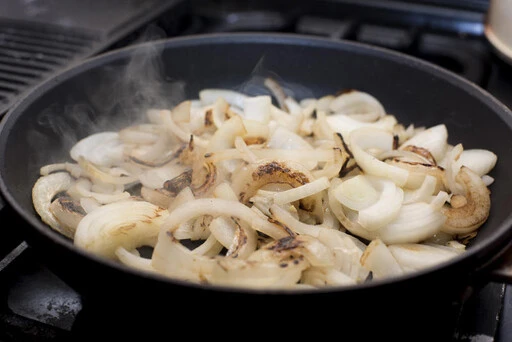
- Incorporating Oriental Flavors into Your Cooking
Incorporating oriental flavors into your cooking can open up a world of new taste experiences. Ingredients such as green tea, ginger, and sesame seeds can add unique and exciting flavors to your dishes. These flavors can be used in a variety of ways, from infusing doughs and batters to creating flavorful fillings and toppings.
Experimenting with oriental flavors allows you to create food that is both innovative and rooted in tradition. For example, using matcha powder in cakes and cookies adds a vibrant color and a subtle, earthy flavor. By blending these traditional ingredients with your cooking repertoire, you can craft dishes that are not only delicious but also culturally rich and diverse.
Using soy sauce, miso, and fermented black beans can add a savory umami flavor to your dishes. These ingredients can be used in marinades, sauces, and even baked goods to introduce a new dimension of taste. Understanding the balance of sweet, salty, sour, and umami flavors common in oriental cuisine can help you create well-rounded and satisfying dishes.
4. Meat Preparation Techniques
Proper meat preparation techniques are essential for achieving the desired texture and flavor in your dishes. Whether you’re marinating, roasting, or frying, understanding the science behind meat preparation can help you get the most out of your ingredients. Different cuts of meat require different approaches to bring out their best qualities.
For instance, marinating meat can enhance its flavor and tenderness by breaking down muscle fibers and adding moisture. Similarly, cooking meat with or without the flesh can yield different results in terms of texture and taste. By mastering various meat preparation techniques, you can create dishes that are both flavorful and perfectly cooked.
The method of slicing meat, especially in oriental cooking, can also affect the final dish. Cutting meat against the grain can make it more tender, while cutting with the grain can result in chewier textures. Understanding these nuances and applying the right techniques can enhance your meat dishes, making them more enjoyable and easier to eat.
- The Science of Marinating
Marinating is a technique that uses acidic ingredients like vinegar or lemon juice to tenderize meat and infuse it with flavor. The acid in the marinade breaks down the proteins in the meat, making it more tender and allowing the flavors to penetrate deeper. This technique is particularly useful for tougher cuts of meat that require additional tenderizing.
Understanding the science of marinating can help you create more flavorful and tender dishes. For example, adding soy sauce and ginger to a marinade can introduce oriental flavors while also enhancing the meat’s texture. By experimenting with different marinades, you can discover new flavor combinations and improve the quality of your food.
Marinating times and temperatures also play a crucial role. Shorter marinating times are suitable for delicate proteins like fish, while tougher meats benefit from longer marination. Cold marinating helps preserve the meat and prevent bacterial growth, ensuring food safety. By mastering these aspects of marinating, you can achieve optimal results in both flavor and texture.
- Cooking Beef: With and Without Flesh
Cooking beef with or without the flesh can produce different results in terms of texture and flavor. When cooking beef with the flesh, the meat tends to retain more moisture and flavor, resulting in a juicier and more flavorful dish. On the other hand, cooking beef without the flesh can produce a drier texture but may be preferred for certain recipes.
Understanding the differences between these two methods can help you choose the best approach for your dish. For example, cooking beef with the flesh is ideal for slow-cooked stews and roasts, while cooking without the flesh may be better suited for stir-fries and grilled dishes. By experimenting with both techniques, you can create a variety of delicious beef dishes.
Additionally, the method of cooking frozen beef can affect the outcome. Deep-freezing beef at temperatures below -15°C preserves the moisture by binding the water as ice. When placed immediately in a preheated pan, this method helps retain the beef’s juices, resulting in a fluffy, tender, and quickly cooked piece of meat. This technique is particularly useful for quick meals that don’t compromise on quality.
5. Tips and Tricks for Perfect Dishes
Achieving the perfect dish requires a combination of skill, knowledge, and a few clever tips and tricks. Understanding the science behind cooking can help you produce consistently excellent food. For instance, knowing how to properly measure ingredients, adjust cooking times, and manage temperatures can make a significant difference in your results.
Incorporating tips and tricks from both traditional and oriental cooking techniques can elevate your creations. Simple adjustments, such as using parchment paper to prevent sticking or adding a touch of sesame oil for extra flavor, can enhance the overall quality of your food. These small but effective strategies can help you achieve restaurant-quality results at home.
Maintaining the right moisture levels is another key aspect. For example, when baking, placing a shallow pan of water in the oven can create steam, preventing your baked goods from drying out. This technique is particularly useful for bread and pastries, helping them achieve a soft, fluffy interior with a crisp, golden crust.
- Common Cooking Mistakes and How to Avoid Them
Cooking can be a delicate process, and even small mistakes can lead to disappointing results. One common mistake is inaccurately measuring ingredients, which can affect the texture and flavor of your food. Using a kitchen scale for precise measurements can help you avoid this issue. Another frequent error is overcrowding the pan, which can cause food to cook unevenly.
Avoiding these common mistakes can significantly improve your cooking outcomes. For instance, ensuring your oven is fully preheated before baking and avoiding overmixing batters can help your food cook evenly. Understanding and addressing these common pitfalls allows you to create consistently delicious and visually appealing dishes.
Overcooking or undercooking meat is another frequent error. Using a meat thermometer can ensure that your meat reaches the perfect internal temperature, avoiding both dryness and undercooking. Additionally, letting meat rest after cooking allows the juices to redistribute, resulting in a juicier and more flavorful dish. These small adjustments can greatly enhance your cooking results.
- Enhancing Your Recipes with Science-Based Adjustments
Enhancing your cooking recipes with science-based adjustments can take your food to the next level. For example, understanding the role of acidity in dough can help you achieve a better rise and improved flavor. Adding a small amount of vinegar or lemon juice can strengthen the gluten structure, resulting in fluffier and more resilient baked goods.
Incorporating oriental ingredients and techniques can also enhance your recipes. Using matcha powder for its natural antioxidants or incorporating ginger for its digestive benefits can add both flavor and health benefits to your dishes. Understanding the balance of sweet, salty, sour, and umami flavors common in oriental cuisine can help you create well-rounded and satisfying dishes.
Another science-based adjustment involves controlling the pH levels in your cooking. For example, adding a pinch of baking soda to beans while cooking can reduce cooking time and enhance their texture by making the cooking water more alkaline. Similarly, soaking vegetables in salted water before cooking can help them retain their color and nutrients, resulting in more vibrant and nutritious dishes.
6. Conclusion
The science of food is a vast and fascinating field that can significantly enhance your culinary skills. By understanding the principles behind cooking techniques, ingredient interactions, and temperature control, you can create dishes that are not only delicious but also consistently excellent. Whether you’re a home cook or a professional chef, integrating food science into your cooking can help you achieve better results and unlock new culinary possibilities.
Incorporating oriental cooking techniques and flavors adds another layer of depth and complexity to your food. From high-temperature frying to precise meat preparation, these methods can transform your dishes and introduce exciting new tastes. By blending traditional and oriental techniques, you can create innovative and flavorful dishes that stand out.
Understanding and applying food science is an ongoing journey. As you continue to experiment and learn, you’ll discover new ways to improve your cooking and create memorable meals. Embrace the science of food, and you’ll find yourself cooking with greater confidence and creativity, producing dishes that delight and impress your family and friends.
7. Call to Action
We’d love to hear your feedback! Please share your thoughts and experiences with us. Your input helps us improve and brings more valuable content to our community.

